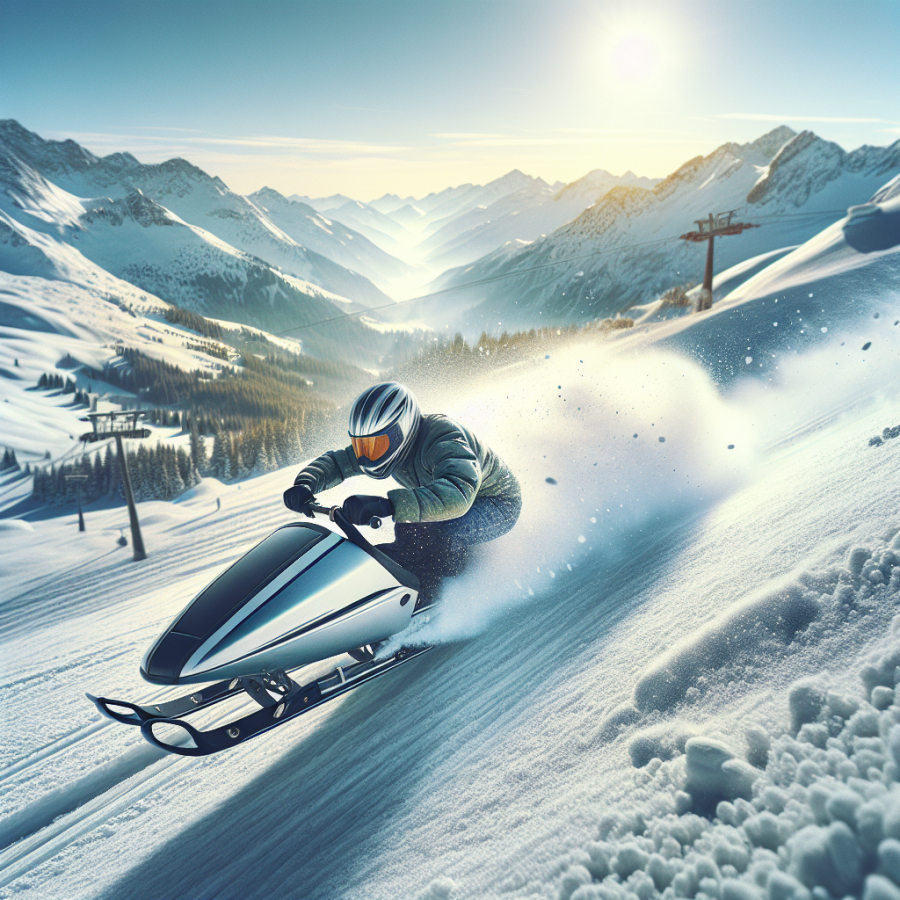Embracing the Rush: An Introduction to Skibobbing Adventures
Embracing the rush of the wind against your face, the blur of snow framing your peripheral vision, and the sense of soaring freely down a mountainside—this is skibobbing. Unlike traditional skiing or snowboarding, skibobbing combines elements of cycling, skiing, and sledding into one exhilarating winter sport.
For the uninitiated, a skibob is a bike-like frame connected to skis instead of wheels, with a seat and handlebars. You steer with the handlebars, while your feet rest on smaller skis for additional control and balance. Skibobbing can be seen as a gateway to downhill snow sports for those hesitant to strap into skis or a snowboard for the first time.
Getting started with skibobbing is relatively straightforward. The first step is typically to rent or purchase a skibob and the appropriate safety gear, such as a helmet, gloves, and possibly body padding. Beginners would do well to take a lesson or two, as a professional can provide invaluable advice on handling the bike, managing speed, and controlling direction. Understanding how to fall safely and get back up can also make the learning process less intimidating.
The learning curve for skibobbing is often less steep than for skiing or snowboarding. The seated position lowers your center of gravity, making it easier to balance and reducing the physical demands on your body. Additionally, those with joint issues or past injuries can find solace in the sport’s reduced impact compared to other winter activities.
One of the greatest joys of skibobbing is that it can be as gentle or as hair-raising as you wish. On smooth, gentle slopes, riders can cruise at a leisurely pace, taking in the winter scenery and enjoying the sport as a form of relaxation. However, adventure-seekers can push the limits of their skills on more challenging terrain, executing turns at high speeds and even taking to the air with the right techniques and jumps.
Skibobbing also offers a unique community aspect, with clubs and groups organizing excursions and races. For those looking to test their skills competitively, slalom races and downhill events offer an adrenaline-pumping experience where precision and speed are key. Meanwhile, group outings emphasize the social nature of the sport, where experiences and laughs are shared amongst friends.
Safety on the slopes is of paramount importance.
Read also:
The Intriguing World of Curling: Strategy on Ice
Mastering the Slopes: Tips and Techniques for Skibobbing Enthusiasts
As you delve deeper into the world of skibobbing, it becomes clear that this unique winter sport offers an exhilarating blend of skiing and cycling. To truly master the slopes and navigate this winter wonderland with skill and grace, there are several key tips and techniques you should consider integrating into your practice.
Understanding the Skibob
Firstly, familiarize yourself with the mechanics of your skibob. A skibob is composed of a frame similar to a bike, complete with a saddle, handlebars, and foot skis attached to where the wheels would be. Knowing the components and how they work together to handle the snowy terrain is essential. Adjust the saddle and handlebars to ensure they are at the right height for your comfort and control.
Proper Riding Posture
Maintain a proper riding posture to enhance your control and reduce the risk of injury. Sit back in the saddle to ensure your weight is distributed evenly, and keep a slight bend in your knees. Your arms should be relaxed but prepared to steer with precision.
Using Foot Skis Effectively
Foot skis play a vital role in direction control and balance. Practice using the inside edges of your foot skis to steer and stabilize your skibob. Slight changes in foot pressure can make significant directional adjustments, so work on refining your foot movements to be as smooth as possible.
Controlled Braking
Learning to brake effectively is crucial for a safe skibobbing experience. Use the brake gently to avoid locking the skis and losing control. Develop a sense of how much pressure to apply and when to start braking as you approach turns or descend steeper sections.
Mastering Turns
Turning on a skibob involves a combination of leaning, foot ski adjustment, and handlebar steering. Lean into your turns and use your foot skis to carve the snow, much like you would when skiing. Anticipate your turns in advance so you can adjust your speed and position smoothly.
Navigating Varied Terrain
Skibobbing isn't just about speed—it's also about handling different types of snow conditions and terrains. Practice on various slopes: flat areas, moderate hills, and more challenging descents. Get a feel for how your skibob responds to icy patches, powder snow, and compacted tracks.
Building Core Strength
To maintain balance and stability on a skibob, a strong core is essential.




